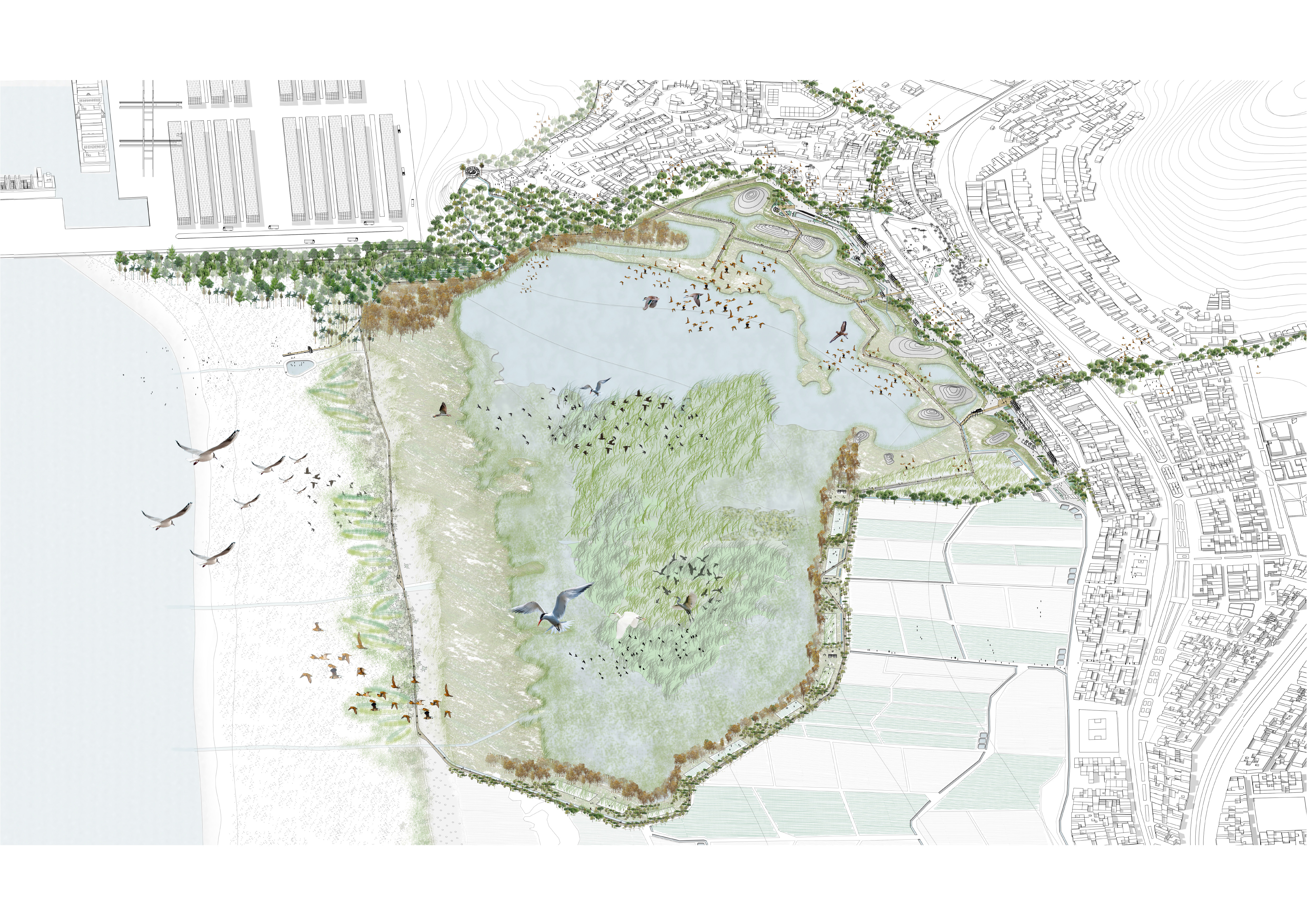
COEXISTENCE INTERMEDIATES. Between anthropic scenarios and a natural ecosystem, the Santa Rosa wetland.
PFC1
Pontificia Universidad Católica del Perú
Currently, the Santa Rosa wetland is delimited by absent intermediates generated by anthropic activities, spaces where two different situations are not articulated with each other: between wetland and agricultural zone, between wetland and urban area, or between wetland and port terminal.
The project proposes wetland regeneration and protection from its INTERMEDIATES, developing for it, territorial scale systems such as plant system, water system, and paths system that will configure the “coexistence intermediates” -neighborhood, agricultural, dune and forestry-.
This will be inhabited by a landscape path that begins in the “neighborhood intermediate”, space that mitigates future urban growth considering pre-hispanic memory; It continues through the “agricultural intermediate”, a space generated by the decontamination of irrigation canals; It continues through the “dune intermediate”, space in constant change due to the sedimentation process generated by the port terminal; and It ends in the “forestry intermediate”, a 10-hectare forest that, together with the topographic intervention, allows bird refuge protection.
Thus, the absent intermediates are reconfigured into COEXISTENCE INTERMEDIATES, establishing a link between natural ecosystem and anthropic scenarios; generating a new public space for the neighborhood, taking advantage of productive potential of wetland ecosystem, maintaining the operation of an international scale infrastructure, but above all, protecting an essential body of water for birds.
